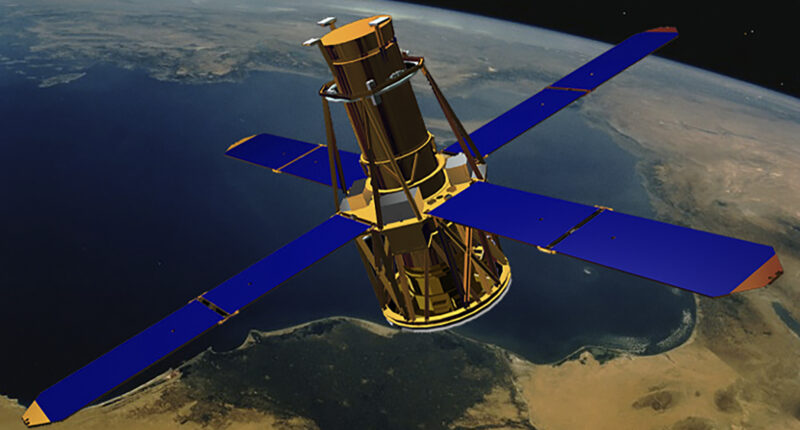A MASSIVE 660-lbs satellite is expected to crash back to Earth on Wednesday with a one in 2,467 chance of hitting someone upon reentry, NASA says.
The Reuven Ramaty High Energy Solar Spectroscopic Imager (RHESSI) has been retired since 2018 and is entering our atmosphere again for the first time in almost 21 years.
NASA and the Department of Defense have predicted that the satellite will make its entry at around 9:30 p.m. on April 19, though they warned there is an uncertainty of plus or minus 16 hours.
The agency did not reveal where on the planet they expect it to land and said they expect most of the satellite to burn up upon entry.
However, there is an approximately 1 in 2,467 chance debris from the satellite could come in contact with someone when it does.
While NASA has described this risk as “low,” it is much higher than other uncommon risks people face daily.
For example, the National Weather Service estimates that every year, individuals face a 1 in 1,222,000 chance of being struck by lightning.
That chance goes up when looking at the odds of being struck within an average lifetime, with a 1 in 15,300 chance – however it is still much lower than the chance of being hit by RHESSI.
Additionally, the Hellis Solutions Limited, a group of arboricultural consulants, estimated that people face a 1 in 10,000,000 risk at dying from a fallen tree.
The Centers of Disease Control and Prevention also report that the chance of someone being hit by a car are 1 in 4,292.
Most read in News Tech
CHANCES OF FREAK ACCIDENTS
- Odds of being hit by lightning in a year: 1 in 1,222,000
- Odds of being hit by lightning in lifetime: 1 in 15,300
- Odds of dying due to fallen tree: 1 in 10,000,000
- Odds of being hit by a car: 1 in 4,292
- Odds of dying due to a tornado: 1 in 13,000,000
- Odds of dying in a plane crash annually: 1 in 11,000,000
The spacecraft first launched in 2002 and for 16 years observed solar flares and coronal mass ejections, according to NASA.
It was launched with an Orbital Sciences Corporation Pegasus XL rocket and features only one imaging spectrometer.
During its mission, the satellite recorded over 100,000 X-ray events, assisting researchers in the study of energetic particles in solar flares.
RHESSI also assisted in other discoveries, such as improving measurements of the shape of the Sun and research on terrestrial gamma-ray flashes, NASA detailed.
According to the agency, RHESSI provided the first gamma-ray images and high-energy X-ray images of solar flares.
The satellite was retired in 2018 after NASA had communication difficulties with RHESSI.
RHESSI reentry to Earth this week marks the second retired satellite to come crashing down in 2023 so far.
In January, the Earth Radiation Budget Satellite re-entered our atmosphere after nearly 40 years in space.
At the time, NASA said there was a 1 in 9,400 chance of injury from the 5,400lb plummeting down to the planet.









